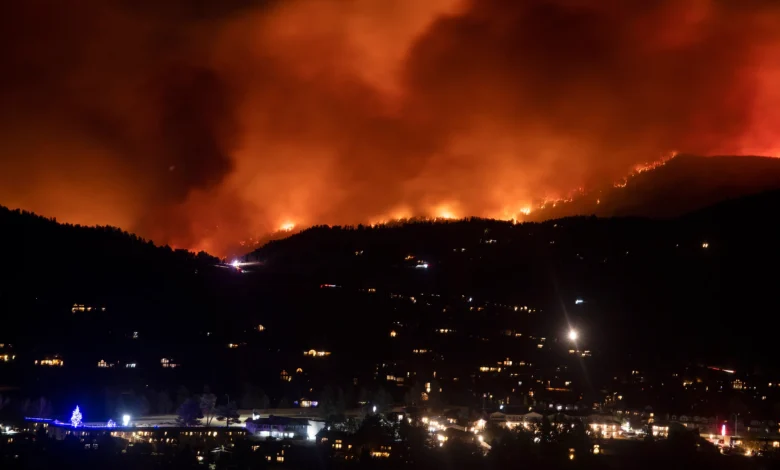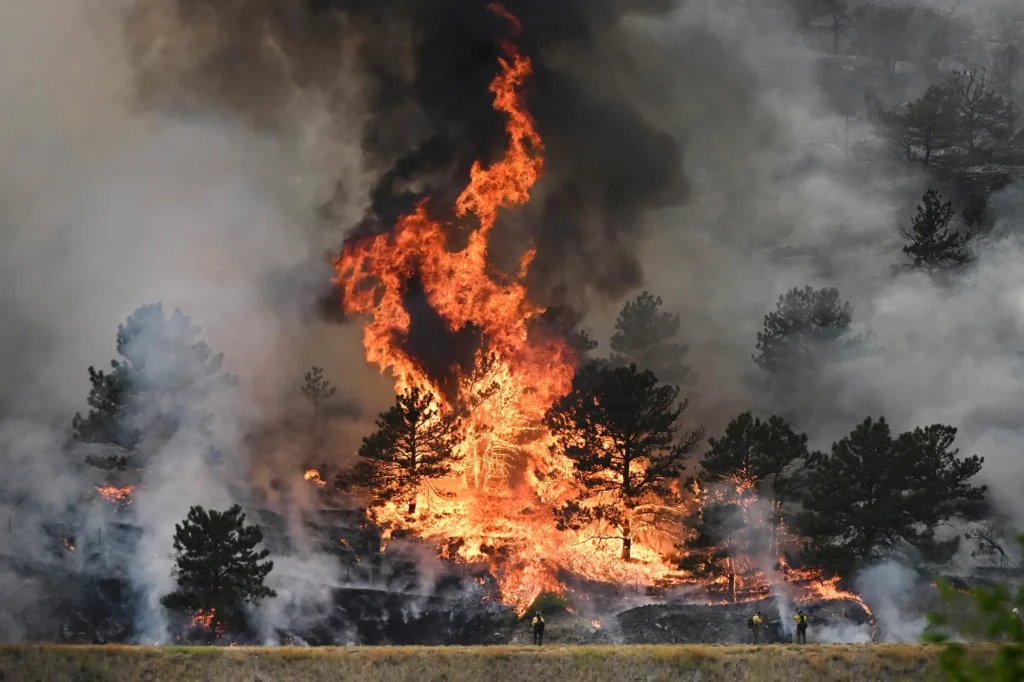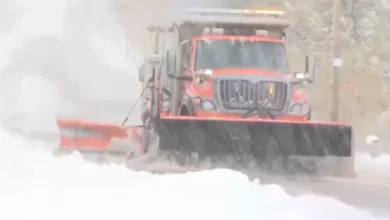Colorado Fires: Causes, Impact, and Prevention Strategies for 2023

Colorado Fires breathtaking landscapes—think snow-capped peaks, dense forests, and arid canyons—are as dynamic as they are beautiful. However, the state’s unique geography and climate also make it one of the most wildfire-prone regions in the U.S. In recent years, Colorado wildfires have grown larger, more frequent, and more destructive, reshaping communities and ecosystems. This comprehensive guide explores the causes of Colorado fires, their impacts, and actionable steps to mitigate risks.
The Growing Threat of Colorado Wildfires

Colorado Fires season has intensified over the past decade. In 2020 alone, the state saw three of its largest wildfires in history:
- Cameron Peak Fire: Burned 208,913 acres in Larimer County.
- East Troublesome Fire: Consumed 193,812 acres near Grand Lake.
- Pine Gulch Fire: Scorched 139,007 acres in Garfield County.
The 2021 Marshall Fire near Boulder became the most destructive in state history, destroying over 1,000 homes and causing $2 billion in damages. In 2022, wildfires like the Oil Springs Fire burned 12,613 acres in Montezuma County, while 2023 saw significant blazes such as the Quarry Fire near Colorado Springs.
Why Are Colorado Wildfires Getting Worse?
Climate change plays a key role. Rising temperatures, prolonged droughts, and reduced snowpack create tinder-dry conditions. Add strong winds (like the 100+ mph gusts during the Marshall Fire) and ample fuel from overgrown forests, and the stage is set for disaster.
Key Causes of Colorado Wildfires
1. Natural Factors
- Drought Conditions: Colorado experienced its driest 22-year period on record between 2000–2021.
- Climate Change: Warmer temperatures evaporate moisture from vegetation, turning forests into kindling.
- Lightning Strikes: Natural ignitions account for 30% of Colorado wildfires.
2. Human Activity
- Power Lines: Aging infrastructure and high winds often spark fires. The 2021 Marshall Fire was linked to a downed power line.
- Campfires and Debris Burning: Unattended campfires caused 25% of wildfires in 2022.
- Arson: Intentional acts account for a smaller percentage but remain a concern.
3. Fuel Load
Decades of fire suppression have allowed forests to accumulate dead vegetation. When fires ignite, they burn hotter and faster.
Impact of Colorado Wildfires

Economic Costs
- Property Damage: The Marshall Fire alone caused $2 billion in losses.
- Firefighting Expenses: Colorado spent $132 million on wildfire suppression in 2020.
- Tourism Decline: Smoke and evacuations deter visitors to towns like Estes Park and Steamboat Springs.
Environmental Consequences
- Habitat Destruction: Fires displace wildlife and destroy ecosystems.
- Air Quality: Smoke from wildfires releases PM2.5 particles, worsening respiratory issues. During the 2021 fires, Denver’s air quality index reached “hazardous” levels.
- Soil Erosion: Burned areas are prone to mudslides, as seen after the 2020 Cameron Peak Fire.
Health Risks
- Respiratory Problems: Smoke inhalation leads to asthma attacks and cardiovascular issues.
- Mental Health: Survivors often face PTSD, anxiety, and grief after losing homes.
Prevention and Mitigation: How Colorado is Fighting Back
State and Local Initiatives
- Fire Bans: Restrictions on campfires and fireworks during high-risk periods.
- Controlled Burns: Prescribed fires reduce fuel load. In 2023, Colorado’s Forest Service treated 48,000 acres with controlled burns.
- Community Programs:
- Firewise USA: Helps neighborhoods create defensible space.
- Wildfire Mitigation Tax Credits: Homeowners can claim up to $2,500 for fire-resistant upgrades.
Technological Innovations
- Satellite Monitoring: Tools like NASA’s FIRMS track fire hotspots in real time.
- AI and Drones: Machine learning predicts fire paths, while drones map burn areas.
Protecting Your Home and Family: Essential Tips
1. Create Defensible Space
- Zone 1 (0–5 feet from home): Use non-flammable materials like gravel. Remove dead plants.
- Zone 2 (5–30 feet): Trim trees, maintain lawns, and space shrubs.
- Zone 3 (30–100 feet): Reduce tree density and clear underbrush.
2. Emergency Preparedness
- Evacuation Plan: Identify multiple exit routes and practice with your family.
- Emergency Kit: Include N95 masks, water, medications, and important documents.
- Stay Informed: Sign up for alerts via Everbridge or CodeRED.
3. Fire-Resistant Landscaping
- Plant Choices: Opt for fire-resistant species like lavender, sage, and aspen trees.
- Roof and Siding: Use Class A-rated materials (e.g., metal, asphalt).
4. Insurance and Policy
- Review policies for wildfire coverage.
- Document belongings with photos/videos.
The Future of Wildfire Management in Colorado
Policy Changes
- SB21-258: Funds wildfire mitigation and recovery.
- Colorado Strategic Wildfire Action Plan: Aims to treat 1 million acres annually by 2025.
Climate Action
Reducing greenhouse gas emissions is critical to slowing temperature rise and drought severity.
Public Awareness
Education campaigns like Ready, Set, Go! teach residents to prepare for evacuations.
FAQs About Colorado Wildfires
1. What is the worst wildfire in Colorado history?
The 2021 Marshall Fire destroyed 1,084 homes and caused $2 billion in damage.
2. How can I check if my area is at risk?
Use Colorado’s Wildfire Risk Public Viewer or consult local fire departments.
3. Are there financial aid programs for wildfire victims?
Yes, FEMA and state programs offer grants for rebuilding.
4. What’s the best time to evacuate?
Leave immediately when ordered—don’t wait.
5. Can I reuse ash-covered soil after a fire?
Test soil for contaminants before replanting.
Conclusion
Colorado’s wildfires are a complex challenge requiring collective action. By understanding causes, investing in prevention, and preparing communities, Coloradans can reduce risks. Stay informed, act proactively, and support policies that address climate change. Together, we can protect the state’s natural beauty and ensure safer futures.



